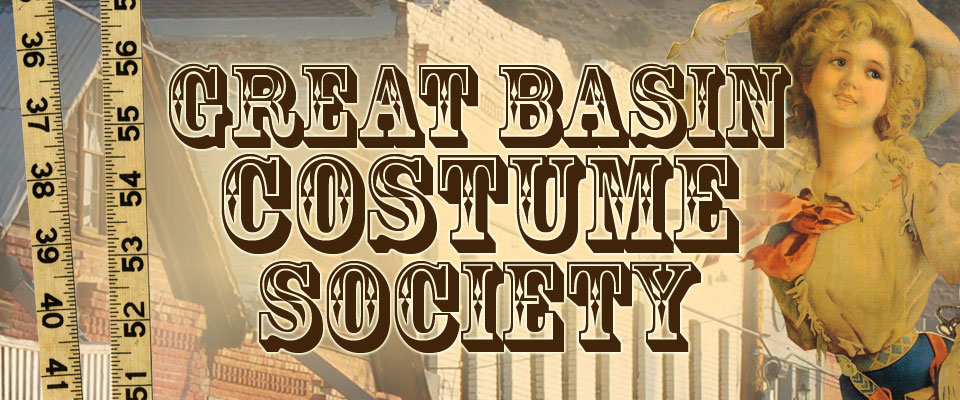 It’s all very well to describe what costumers do, but perhaps we should also explain a little about how costumers come up with the costumes to wear to all those fun events. Mostly, they make them or commission someone else to make them. Some buy them online, often from other costumers, and some rent.
It’s all very well to describe what costumers do, but perhaps we should also explain a little about how costumers come up with the costumes to wear to all those fun events. Mostly, they make them or commission someone else to make them. Some buy them online, often from other costumers, and some rent. The Great Basin Costume Society has been in existence for less than a week and the members – all two of us – haven’t had time to scour Reno and surrounding towns for shops that carry quality costumes. Often, you can find something appropriate in the antique stores, secondhand stores and thrift shops, especially if you’re looking for early 20th century. These are great places to pick up bits of your costume from any era: jewelry, gloves, collars, hats, shoes and the like.
 The Mexican wedding shops on Wells are excellent places to find hoops and petticoats. My high school Spanish/English Dictionary gives at least eight words for “petticoat”. “Crinolina” worked for me. I think “hoop-skirt” is “tontillo”, but you might want to check that. The shop girls were very helpful and with lots of gesturing, giggles and Spanglish, I got what I needed.
The Mexican wedding shops on Wells are excellent places to find hoops and petticoats. My high school Spanish/English Dictionary gives at least eight words for “petticoat”. “Crinolina” worked for me. I think “hoop-skirt” is “tontillo”, but you might want to check that. The shop girls were very helpful and with lots of gesturing, giggles and Spanglish, I got what I needed.
But, mainly, costumers sew. Personally, I think the events are just excuses to make new costumes. It’s addictive. Most of us start with a pattern from Simplicity or Butterick and grow from there. The Society plans to provide workshops and other support. The internet offers an amazing number of blogs by both experienced and novice costumers who are always ready with suggestions, encouragement, and links to other helpful sites. Soon, you’ll find yourself researching the difference between Elizabethan and Victorian corsets and the proper shape for a Regency sleeve or your gentleman’s frock coat. I am continually amazed by the number of men who get wholeheartedly involved in costuming, right down to researching and sewing their own attire. Thank goodness, for without the gentlemen, with whom would we dance?






























